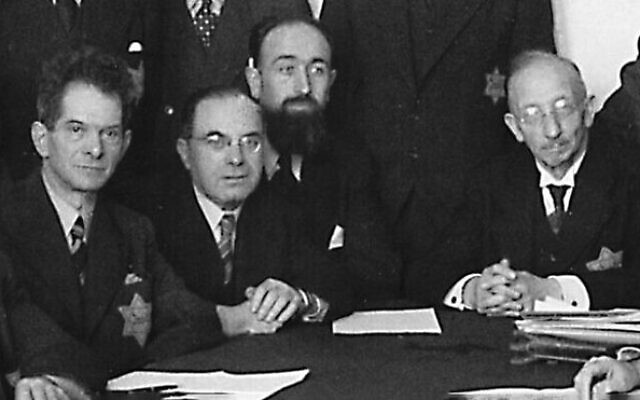Frank betrayer theory slammed
"It contributes not to uncovering the truth, but to confusion and in addition it is full of errors," - John Goldsmith
THE head of the Anne Frank Fund has rejected as “full of errors” a claim that Jewish notary Arnold van den Bergh is the leading suspect in betraying the teen Holocaust diarist to the Nazis during World War II.
Published last week, author Rosemary Sullivan’s The Betrayal of Anne Frank: A Cold Case Investigation determined – based on an anonymous letter sent to Frank’s father, Otto – that van den Bergh, a member of the Nazi-appointed Jewish Council, gave addresses of Jews in hiding to the Germans in exchange for freedom. Among those addresses, the investigators claim, was Otto Frank’s office building, where the concealed rooms were located.
Adding to historians who have branded the finding “rubbish,” John Goldsmith, president of the Basel-based fund set up by Otto Frank, said the claim wasn’t sufficiently backed up and was tantamount to a “conspiracy theory”.
“It contributes not to uncovering the truth, but to confusion and in addition it is full of errors,” Goldsmith told Swiss newspaper Blick am Sonntag, according to Reuters.
“This proof just has not been produced. Simply to disseminate an assertion that then in the public discussion becomes a kind of fact borders on a conspiracy theory,” he charged.
“Now the main statement is: a Jew betrayed Jews. That stays in the memory and it is unsettling.”
Van den Bergh’s relatives also slammed the investigation, saying he was innocent and that they were “upset” his reputation had been wrecked by the allegations.
According to the Daily Mail, his granddaughter claimed that there are inconsistencies in the evidence, noting it showed that it was far from certain that he betrayed the Frank family.
She said van den Bergh, his wife and their three daughters were already in hiding at separate safe houses by 1944, when Anne Frank’s family was caught by the Nazis, adding that her grandfather had no motive to reveal their location.
Family friend Paul Theelen, whose grandfather hid van den Bergh’s youngest daughter, Anne-Marie, between 1943 and 1945, said that the notary was in hiding in the town of Laren, far from Amsterdam, so that it did not make sense for him to travel and inform the Nazis.
“How could he have gone to Amsterdam to inform the German authorities about the Franks when he was in hiding in Laren? He would have been captured himself,” he told MailOnline.
Theelen also noted that by the time the Frank family was arrested, the allied invasion of Normandy had already occurred, which caused many people to believe that the war would soon be over, further putting into question the motive for revealing the Franks’ hiding place.
Van den Bergh died in 1950.
Times of Israel


comments